

Consider Adopting Broker-Dealer Compliance Practices Click here to download (PDF)
Read More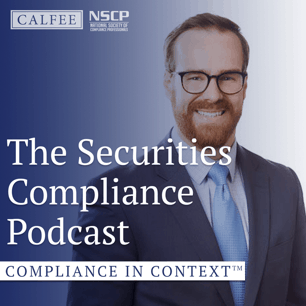
Welcome back to the Securities Compliance podcast. On today’s show, we do a deep dive on the 2021 Investment Adviser Section Report from the North American Securities Administrators Association highlighting […]
Read More
In May 2019, Bates Compliance published a review of the supervision, inspection and operational considerations for broker-dealer branch office compliance. In that paper, Bates described the core obligations on supervisors […]
Read More
FINRA has announced the publication of the 2021 Report on FINRA’s Examination and Risk Monitoring Program. The new Report combines and replaces two previously published annual reports, the Report on […]
Read More
Just prior to the new year, the SEC finalized significant changes to rules and forms governing advertising and cash solicitations under the Investment Advisers Act (“IAA”). In the original proposal, introduced more […]
Read More
FireEye, Inc., a leading U.S. cybersecurity firm, recently disclosed that it had been hacked by a nation-state actor. The company has since revealed that the hack was likely perpetrated, in part, through an ongoing compromise of “Orion” […]
Read More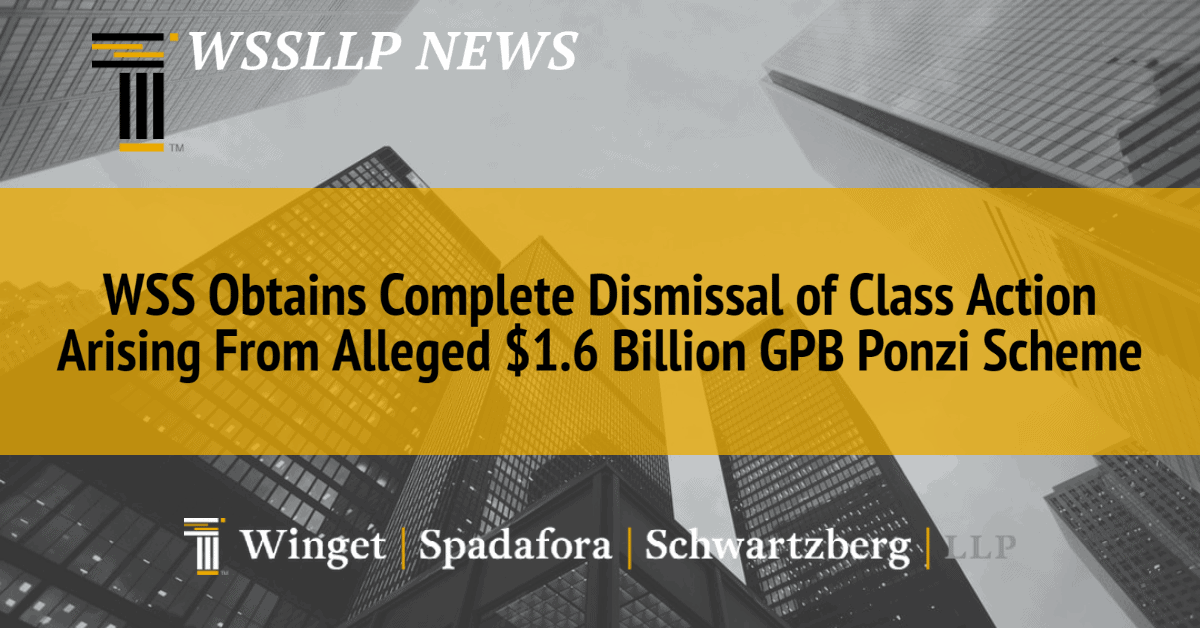
On December 14, 2020, Winget, Spadafora & Schwartzberg LLP’s New York office obtained the dismissal of all claims filed against its client in a securities fraud class action arising from […]
Read More
On December 3, 2020, a panel of arbitrators in Philadelphia dismissed the statement of claim of customer Peter Radle, and sanctioned him $15,000 for his non-cooperation in discovery. The statement […]
Read More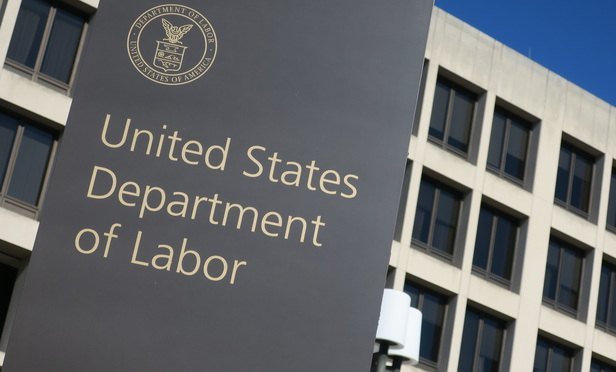
On December 15, 2020, the Department of Labor finalized long-considered regulations on investment advice for retirement accounts under the Employee Retirement Income Security Act (“ERISA”) and the Internal Revenue Code (“Code”). The […]
Read More
On October 26, 2020, the SEC and FINRA staff held a remote public roundtable to discuss the implementation of Regulation Best Interest (“Reg BI”) and the Customer Relationship Form (“Form CRS”) since […]
Read More
If we have learned anything in 2020, it is that the only thing constant in life is change. The world has changed in just about every way and day-to-day life continues […]
Read More
On June 19, 2020, FINRA issued Regulatory Notice 20-18, noting changes to FINRA’s suitability rule, Capital Acquisition Broker (“CAB”) suitability rule and rules governing non-cash compensation consistent with the requirements […]
Read More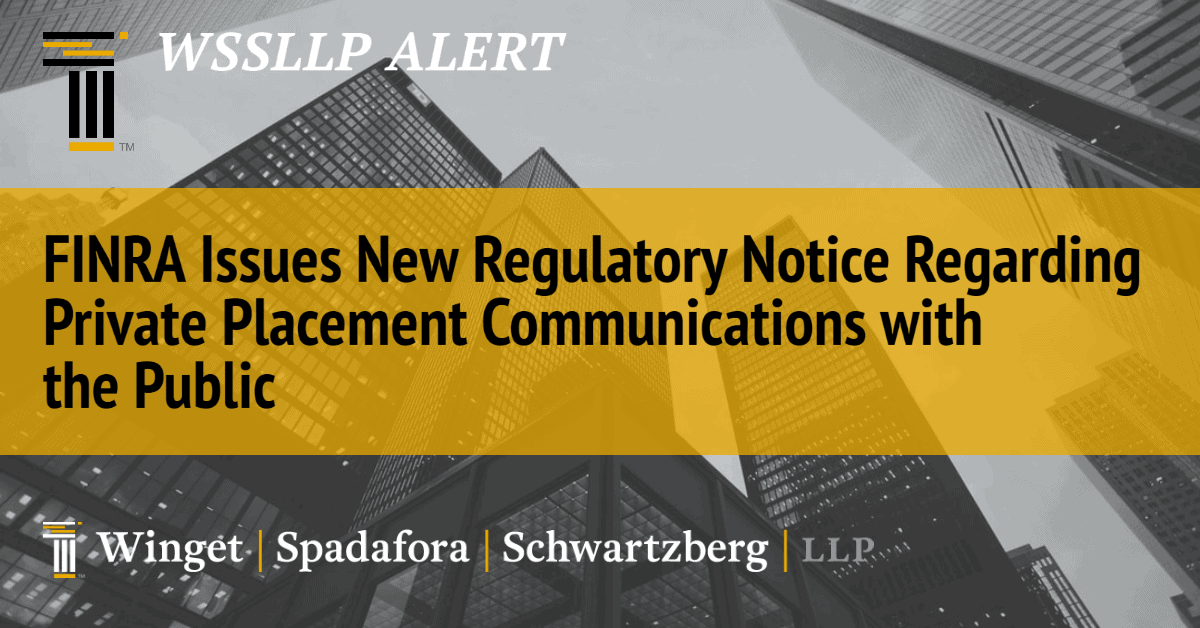
FINRA has issued Regulatory Notice 20-21 which provides guidance to its member firms to help them comply with FINRA Rule 2201 pertaining to retail communications concerning private placement offerings. FINRA […]
Read More
Over the past several weeks, the Financial Crimes Enforcement Network (FinCEN) has issued new guidance on customer due diligence requirements, an advisory on cyber-enabled financial crime and an alert concerning […]
Read More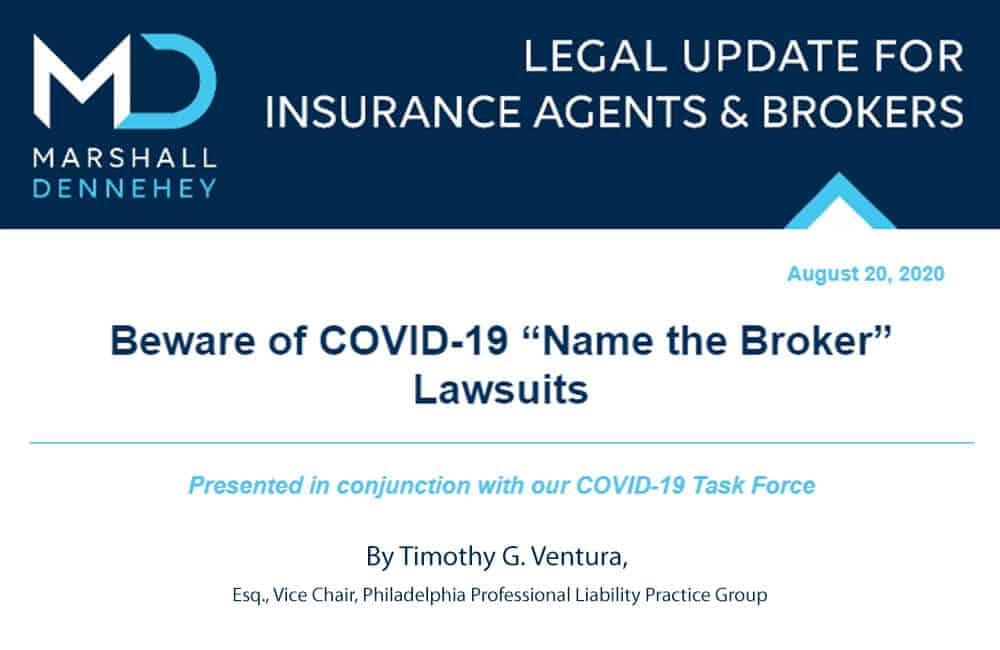
By Timothy G. Ventura, Esq., Vice Chair, Philadelphia Professional Liability Practice GroupThis week a federal judge in Texas granted an insurance broker’s dismissal from litigation involving a COVID-19 business interruption coverage […]
Read More
The arbitration was filed by an extremely wealthy individual through his offshore creditor protection trust and its asset protection sub-entities. The claimants sought to recover $650,000 related to a bad […]
Read More
FINRA issued Special Alert Notice 20-16 to share COVID-19-related off-site transition and supervisory practice information. The information was derived from recent FINRA discussions with small, mid-sized and large firms. FINRA cautioned that […]
Read More
Concern about recommendations of complex financial products for retail investors has been at the center of the debate over changing standards for broker-dealers and investment advisers. With full implementation of […]
Read More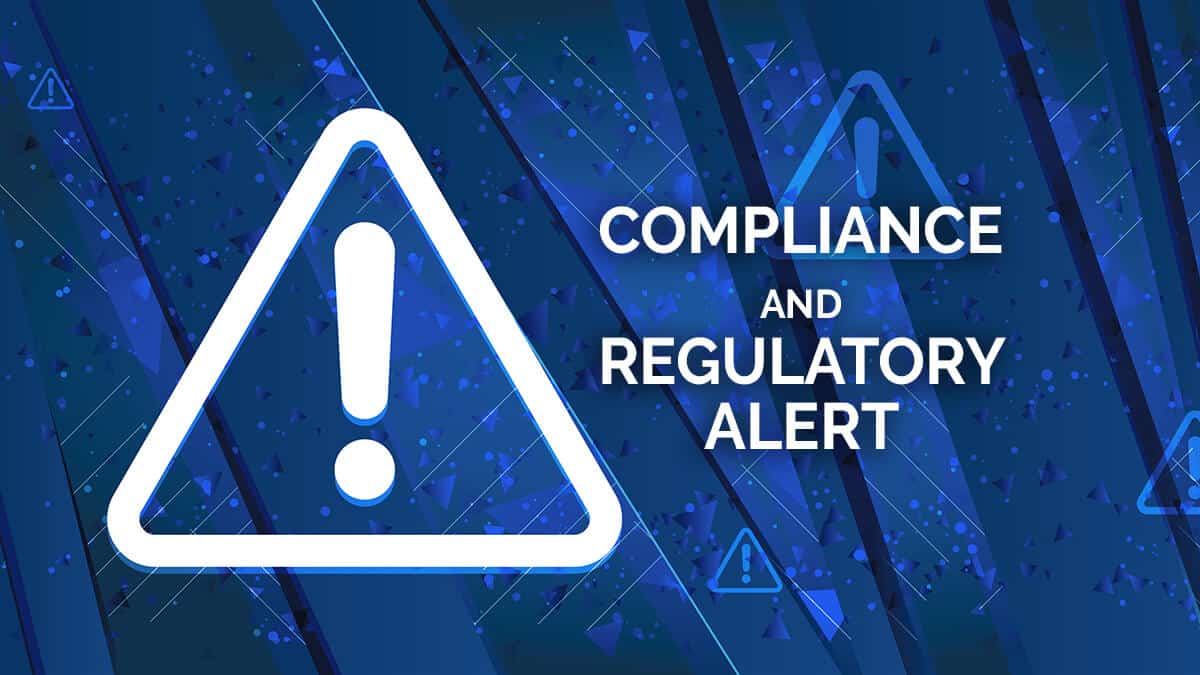
On April 7, 2020, the SEC Office of Compliance Inspections and Examinations (“OCIE”) issued two new alerts to broker-dealers and investment advisers about the “expected scope and content” of its compliance examinations […]
Read More
On the heels of FINRA’s notice regarding pandemic-related business continuity measures, CRC would like to take this opportunity to remind all financial services clients that now is the time to […]
Read More
The SEC’s IAA Release No. 5469 on Wednesday, March 25, 2020 amends its IAA Release No. 5463 and now allows for extending the filing (March 30) and delivery (April 30) deadline dates of the Form […]
Read More
Bates Group has been tracking regulatory and enforcement developments on senior financial exploitation. Two recent publications and recent sweeping enforcement actions suggest that the phenomenon is becoming better understood and […]
Read More
Andre Henry was attending a concert when he was shot and killed by random gunfire. The concert was produced by a third-party and took place at a property owned by […]
Read More
On July 25, 2019, the Stop Hacks and Improve Electronic Data Security Act (SHIELD Act) was signed into law (see Update S5575B). The SHIELD Act expands the definitions of both breach […]
Read More
On February 3, 2020, the New York County Lawyers Association hosted its “21st Annual FINRA Listens and Speaks” panel. The panel members discussed recent statistics, proposed regulations, and tips for […]
Read More
Understand what Reg BI requires now — and what more you must implement before the final deadline. Read our new white paper: “SEC’s Regulation Best Interest Perspectives on Firm Compliance.” […]
Read More
The SEC Office of Compliance Inspections and Examinations (“OCIE”) set out their 2020 examinations priorities in an annual report issued last week. The report reminds registered entities that all its priorities are […]
Read More
Governor Murphy has signed into law the “Safeguarding Against Financial Exploitation Act” (the Act) previously introduced on February 25, 2019 as Assembly Bill #5091. The Act provides that when a “qualified […]
Read More
I’m thrilled to share that Business.com has named Sterling as the Best Background Check Company for Self-Service for the second year in a row! In Business.com’s “Best Background Check Companies […]
Read More
FINRA has announced their regulatory and examination priorities for the upcoming year. You can read the letter, with an introduction by FINRA President and CEO Robert Cook, here. New for this year […]
Read More
The SEC’s Office of Compliance Inspections and Examinations (OCIE) has announced their exam priorities for the upcoming year. You can read the press release here. Stay tuned to the Bates News […]
Read More
January 10th, 2020 | Angela Preston, Senior Vice President and Counsel, Corporate Ethics and Compliance with Ryan Hannan, Compliance Associate On December 20, 2019, the President signed S. 1790, the […]
Read More
Human resource and recruiting leaders have experienced unprecedented change in recent years. An array of workplace trends and innovations have combined to reshape how HR delivers value to its business […]
Read More
The Securities and Exchange Commission (“SEC” or “Commission”) recently published a proposal for significant changes to the rules and guidance surrounding the marketing and advertising activities of registered investment advisers […]
Read More
The recent GPB Class action suit against 60 independent broker-dealers and several other defendants has revealed a significant gap in coverage for many unsuspecting insureds. Some carriers have taken the […]
Read More
On June 5, 2019, the SEC voted to adopt Rule 15I-1, known as “Regulation Best Interest” or “Reg. BI,” under the Securities Exchange Act of 1934. The SEC adopted Reg. […]
Read More
This newsletter is a periodic publication of Lloyd, Gray, Whitehead & Monroe, PC and is intended for general purposes only.
Read More
On October 18th, 2019, more than a year after the launch of the SEC Share Class Disclosure Initiative and targeted enforcement activity, the SEC Division of Investment Management issued information clarifying conflicts […]
Read More
In this episode of CRC TV, we interview our Compliance and Financial Operations Professional, Scott Brown, who discusses his upbringing in Queens, NY during the 1970s and how it lead […]
Read More
At the 2019 SIFMA Compliance and Legal Society’s New York Regional Seminar, industry panelists along with senior officials from the SEC and FINRA addressed a range of topics including Regulation […]
Read More
On September 26, a bipartisan group of Senators led by Tom Cotton, (R-AR) and Mark Warner (D-AR), formally introduced their bill to strengthen the authority of the Financial Crimes Enforcement Network (FinCEN) […]
Read More
On October 11, 2019, the heads of FinCEN, the SEC and CFTC issued a joint statement to remind financial institutions of their Bank Secrecy Act (“BSA”) obligations for transactions involving “digital assets.” […]
Read More
October is here! That means the SEC’s Reg BI implementation deadline is right around the corner. To support your implementation efforts, Bates Compliance is rolling out the Bates Reg BI […]
Read More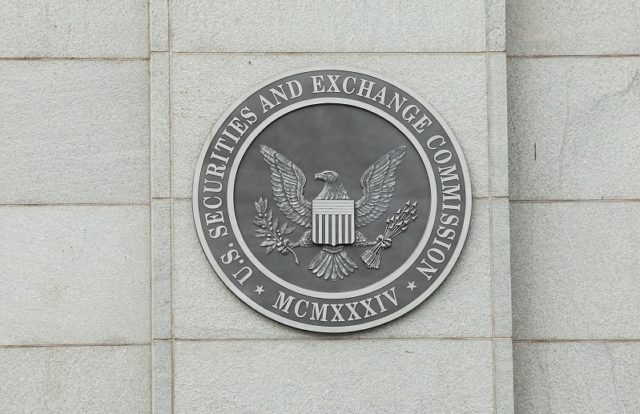
At a discussion forum on SEC enforcement examination initiatives in mid-September, the Director of the Office of Compliance Inspections and Examinations expressed shock that inappropriate share class recommendations are still appearing on […]
Read More
FINRA has been virtually silent since announcing plans for a major overhaul of the expungement process in its Notice to Members 17-42 in December 2017. This week, FINRA finally offered […]
Read MoreIf you would like to join IBDC-RIAC Alliance Members at the April 10, 2024 Yankees vs Marlins baseball game, Yankee Stadium 7:00 pm, please send Lilian Morvay a message at: Lilian@IBDCconsulting.com and she will send you an invitation.
The following IBDC-RIAC Alliance Members will be your hosts: